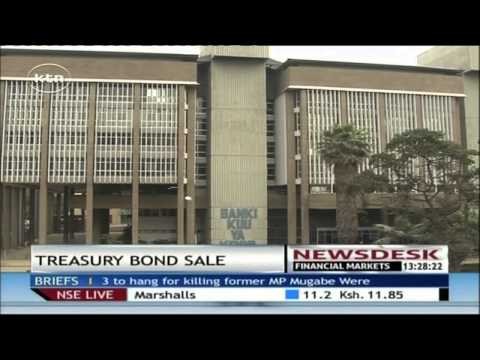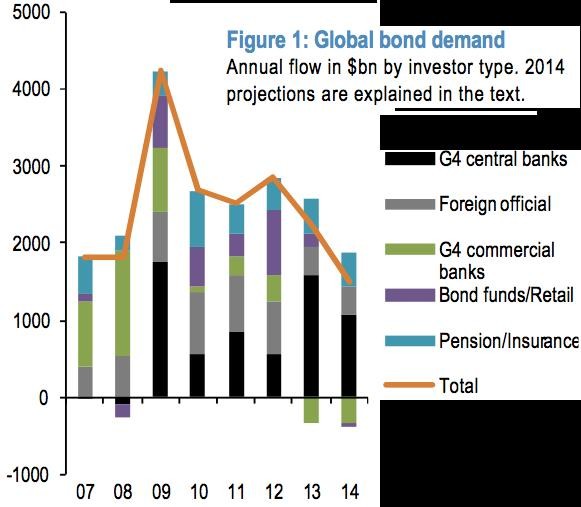When Your Bond Comes Calling Bonds Market Dhara Web Site
Post on: 16 Март, 2015 No Comment

Home Bonds When Your Bond Comes Calling
1/9/2012 2:27:02 AM
Administrator
Posts: 562
Fixed-income investors in low-interest rate environments often discover that the higher rate that they are receiving from their current bonds and CDs doesn’t last until maturity. In many cases, they will receive a notice from their issuers stating that their principal is going to be refunded at a specific date in the future. Bonds that have call features provide this right to issuers of fixed-income instruments as a measure of protection against a drop in interest rates. This article explores the options for investors who suddenly find themselves sitting on a pile of cash as a result of a called bond.What Is a Call Feature?
New issues of bonds and other fixed-income instruments will pay a rate of interest that mirrors the current interest rate environment. If rates are low, then all the bonds and CDs issued during that period will pay a low rate as well. When rates are high, the same rule applies. But issuers of fixed-income investments have learned that it can be a drain on their cash flow when they are required to continue paying a high interest rate after rates have gone back down. Therefore, they often include a call feature in their issues that provides them a means of refunding a long-term issue early if rates decline sharply. Many short-term issues are callable as well.
For example, a corporation that issues a 30-year note paying 7% may incorporate a call feature into the bond that allows the corporation to redeem it after a predetermined period of time, such as after five years. This way, the corporation won’t have to keep paying 7% to its bondholders if interest rates drop to 2-3% after the issue is sold. Corporations will also sometimes use the proceeds from a stock offering to retire bond debt.
Getting Called
Bondholders will receive a notice from the issuer informing them of the call, followed by the return of their principal. In some cases, issuers soften the loss of income from the call by calling the issue at a premium, such as $105. This would mean that all bondholders would receive a 5% premium above par ($1,000 per bond) in addition to the principal as a consolation for the call. Because call features are considered a disadvantage to the investor, callable bonds with longer maturities usually pay a rate at least a quarter point higher than comparable non-callable issues. Call features can be found in corporate, municipal and government issues as well as CDs. Preferred stocks can also contain call provisions.
Investor Options
Investors who receive call notices on their bonds are left with the dilemma of what to do with their money after their principal is refunded. Of course, they can leave their funds in cash, but most will seek to replace their called note with a similar investment if possible. However, attractive alternatives will seldom be readily available for called bondholders because their bonds will generally be called only when rates are low.
Going Corporate
Investors have several options they can choose from if they don’t want to stay in cash. A key issue to consider is the current interest rate environment. If rates are forecasted to stay low for the foreseeable future, then it may be wise to consider purchasing an intermediate-term bond that pays a higher rate than cash. Investing in a riskier bond, such as an investment-grade corporate bond may be an alternative for investors who were called out of a municipal or agency offering and are willing to take a moderate amount of risk. Those who decide to purchase new bonds will probably be wise to wait for the next new issue rather than purchase them in the secondary market, as bond prices increase when interest rates are down.
Climbing the Bond Ladder
If the Fed is expected to raise rates several times within the next two years, then a structured ladder of short-term bonds or CDs may provide the best return possible until interest rates permit the replacement of the called instrument with a similar issue. A bond fund may also be a viable alternative for both conservative and aggressive investors, as these instruments can provide diversification and professional management. (To learn more, read The Basics Of The Bond Ladder .)

Widow and Orphan Stocks
Utility stocks and income-producing stocks of stable blue chip companies can also replace the income lost from a bond call. A conservative investor who is called out of a CD or agency issue might consider moving a portion of the principal refunded into a government or conservative corporate fund with a solid long-term track record, and then using the rest of the cash to purchase shares of a local utility company.
This provides balance and diversification without excessive risk. However, investors should be wary of scrambling to replace a high-yielding investment with the first thing that they find just to preserve cash flow. A foray into junk bonds is not a wise substitute for a conservative investor who got called out of a CD or agency offering. (For more information on analyzing junk bonds, see Junk Bonds: Everything You Need To Know )
Put Options
These options are similar to call options, except that it is the investor who has the option to put the bond back to the issuer within a certain time frame, such as a 90-day window after five years. Put options provide investors with the same option as call options give issuers: a way to redeem the issue after a certain period of time. Investors would put an issue back to the issuer if rates have risen substantially since the time of issue. Then they can reinvest the money in higher-paying instruments. Of course, this option comes at a price; bonds with put options usually pay a slightly lower rate than bonds without.
Conclusion
Calls usually come at a very inconvenient time for investors. Those who get their principal handed back to them should think carefully and assess where interest rates are going before reinvesting. A rising rate environment will likely dictate a different strategy than a stagnant one. Investors with put options must likewise evaluate their alternatives when their put option becomes effective.














